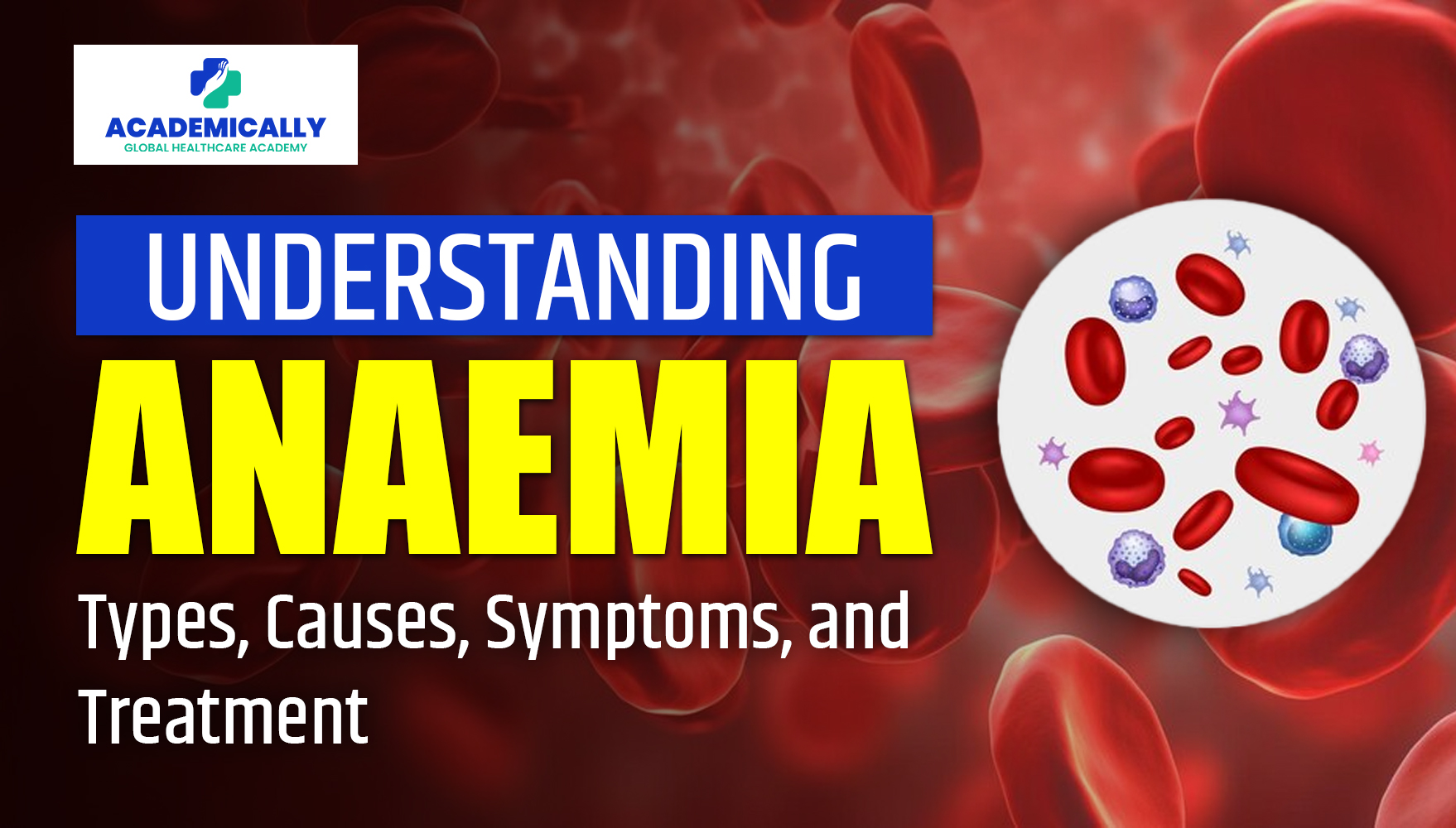What is Anaemia?
Anaemia is a condition characterised by a lack of healthy red blood cells or haemoglobin in the blood. Haemoglobin is the protein in red blood cells responsible for transporting oxygen throughout the body. When haemoglobin levels are low, your body may not receive enough oxygen, leading to fatigue and weakness.
Normal Haemoglobin Ranges
Haemoglobin levels vary based on age, sex, and physiological conditions. Below are the normal ranges:
Group | Haemoglobin Level (g/dL) |
Men | 13.8–17.2 |
Women | 12.1–15.1 |
Pregnant Women | >11.0 |
Children (6–59 months) | 11.0–13.5 |
Children (5–11 years) | 11.5–15.5 |
Adolescents (12–15 years) | 12.0–16.0 |
Pathophysiology of Anaemia
Anaemia arises due to one or more of the following mechanisms:
1. Decreased RBC Production:
- Nutritional deficiencies (iron, vitamin B12, folate).
- Bone marrow suppression (aplastic anaemia, leukaemia).
- Chronic diseases (renal failure, chronic inflammation).
2. Increased RBC Destruction (Hemolysis):
- Inherited hemolytic anaemias (sickle cell anaemia, thalassemia).
- Acquired hemolytic anaemias (autoimmune hemolysis, infections).
3. Blood Loss:
- Acute (trauma, surgery).
- Chronic (gastrointestinal bleeding, heavy menstruation).
Types of Anaemia
There are several types of anaemia, including:
- Iron-Deficiency Anaemia: Caused by insufficient iron intake or absorption.
- Vitamin Deficiency Anaemia: Caused by a lack of essential vitamins like B12 or folate.
- Hemolytic Anaemia: When red blood cells are destroyed faster than they are produced.
- Aplastic Anaemia: A rare condition where the bone marrow fails to produce enough blood cells.
- Sickle Cell Anaemia: A genetic condition where red blood cells are shaped abnormally.
- Anaemia of Chronic Disease: Associated with chronic illnesses like kidney disease or cancer.
Common Causes of Anaemia
The underlying causes of anaemia vary but may include:
- Nutritional Deficiencies: Lack of iron, vitamin B12, or folate.
- Blood Loss: Due to injuries, heavy menstrual periods, or internal bleeding.
- Chronic Conditions: Diseases such as kidney failure or inflammatory conditions.
- Genetic Disorders: Inherited conditions like sickle cell anaemia or thalassemia.
Symptoms of Anaemia
The symptoms of anaemia can range from mild to severe, depending on its severity and cause. Common symptoms include:
- Fatigue and weakness
- Pale or yellowish skin
- Shortness of breath
- Dizziness or lightheadedness
- Cold hands and feet
- Irregular heartbeat
- Headaches
If left untreated, anaemia can lead to serious health complications such as heart problems or delayed growth in children.
Diagnosis
Diagnosing anaemia typically involves:
1. Complete Blood Count (CBC): Hemoglobin, hematocrit, RBC indices (MCV, MCH).
2. Peripheral Blood Smear: Morphological evaluation (microcytosis, macrocytosis, anisocytosis).
3. Iron Studies: Serum ferritin, transferrin saturation, total iron-binding capacity (TIBC).
4. Vitamin Levels: Serum B12 and folate levels.
5. Hemolysis Markers: LDH, indirect bilirubin, haptoglobin.
6. Bone Marrow Biopsy (if indicated): To diagnose aplastic anaemia or myelodysplastic syndromes.
Treatment Options
Treatment depends on the type and cause of anaemia. Common approaches include:
- Dietary Changes: Incorporating iron-rich foods like spinach, red meat, beans, and fortified cereals.
- Supplements: Iron, vitamin B12, or folate supplements as prescribed by a doctor.
- Medications: For conditions like chronic disease anaemia or autoimmune disorders.
- Blood Transfusions: In severe cases or during critical illness.
- Bone Marrow Transplant: For aplastic anaemia or severe hemolytic anaemia.
Treatment based on the underlying cause:
| Cause | Treatment Approach |
| Iron Deficiency | Oral/IV iron supplementation; dietary changes |
| Vitamin B12/Folate Deficiency | B12 or folate replacement (oral or IM) |
| Chronic Disease | Treat underlying condition; erythropoiesis-stimulating agents |
| Hemolysis | Corticosteroids, immunosuppressants, or splenectomy |
| Severe Cases | Blood transfusions or bone marrow transplant |
Preventing Anaemia
You can reduce your risk of anaemia by:
- Eating a balanced diet rich in iron, vitamins, and minerals.
- Managing chronic conditions effectively.
- Regular check-ups to monitor your blood levels.
Conclusion
To enhance your preparation, consider enrolling in online coaching platforms like Academically’s AMC Preparation Course. This platform provides comprehensive resources, including study materials, question banks, and personalised support to help you succeed.
Fill out this form for a free one-on-one consultation or career guidance to take the next step in your medical career.


